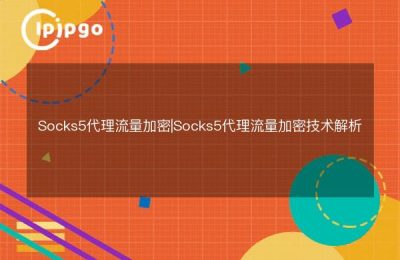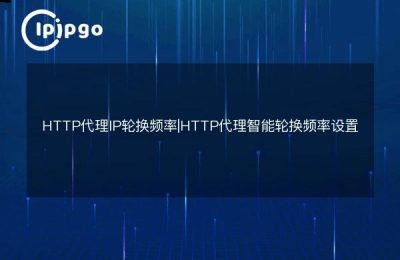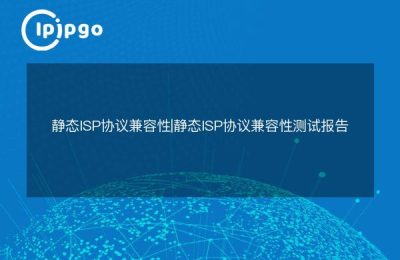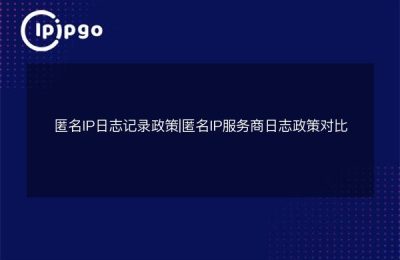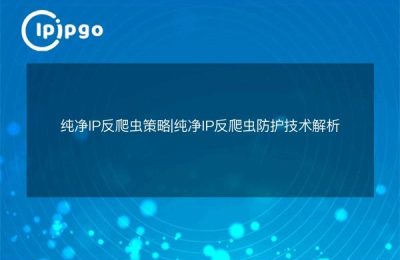
Why is it easy to get blocked for game multicasting?
There is an "unspoken rule" in the game manufacturer's blocking system - when the same device is detected to frequently switch accounts, orMultiple accounts sharing the same network environmentWhen it does, a risk alert will be triggered. In particular, if accounts that are multi-opened through virtual machines, sandboxes, etc. are logged in using the same public IP, the system will directly determine that it is a studio batch operation.
How Dynamic Residential Proxy IP Works
There are three key points that characterize real home broadband users' access to the Internet:IP address randomization,Irregular network behavior,Device fingerprints are not duplicatedipipgo's Dynamic Residential Proxy mimics this natural Internet access pattern, assigning a different home-level IP each time you connect, and each IP corresponds to real geographic location and carrier information.
| Traditional Agents | Dynamic Residential Agents |
|---|---|
| Server room server IP | Real Home Broadband IP |
| fixed address segment | Stochastic global distribution |
| Regular switching | Change in natural frequency |
Four Steps to Real-World Configuration
Step 1: Isolate the device network environment
Each game client must be bound to a separate proxy channel. Taking the API interface provided by ipipgo as an example, different proxy configurations can be automatically assigned to each VM's NIC via scripts.
Step 2: Set up dynamic switching rules
Set the IP replacement policy in the Proxy Management backend:
- Replacement at intervals (30-120 minutes recommended)
- Replacement by traffic threshold (recommended 2-3GB per account)
- Automatic switching in case of abnormal disconnection
Step 3: Simulate Real User Behavior
To avoid all accounts performing the same operation at the same time, it is recommended to set theRandom operation interval(e.g. fight intervals fluctuating between 1.5-3 seconds), with ipipgo's IP geolocation feature, allowing different accounts to display reasonable time zones from corresponding regions.
Step 4: Device Fingerprint Protection
Matching proxy IP needs to be modified:
- MAC address of each virtual machine
- Browser fingerprint information
- Hardware ID parameter (can be realized with the terminal camouflage module of ipipgo)
Three potholes that must be avoided
1. IP purity testing
Some games will be verified by the IP Reputation Vault, it is recommended to turn it on in the ipipgo backendIP quality filteringfunction to automatically exclude risky IPs that have been flagged.
2. Choice of protocol type
Select the agency agreement based on the type of game:
- Round system/card type: HTTP/S protocol is enough
- MMORPG class: must use Socks5 protocol
- Shooting competition class: need to enable UDP protocol support
3. Traffic characterization camouflage
Avoid maintaining a stable connection for long periods of time by setting up a network jitter simulation (e.g. generating 50-200ms delay fluctuations every 10 minutes), which can be found in the advanced settings of ipipgo.
Frequently Asked Questions
Q: How many IPs do I need to open 5 accounts?
A: It is recommended to use N+1 principle, the number of simultaneous online + 1 spare IP. e.g. open 5 numbers to prepare 6 channels, when an IP is abnormal automatically switch.
Q: What happens when the game is updated?
A: All clients must be updated through the proxy, it is recommended to set it in the ipipgo backendDedicated Download Channel, isolating update traffic from other operational traffic.
Q: What should I do if I encounter a sudden IP failure?
A: Enable in ipipgo's client settingsIntelligent switching protectionWhen the connection is abnormal, the system will automatically change to a new IP within 0.8 seconds and will not cause the game to drop.
Through the reasonable configuration of ipipgo's dynamic residential agent, with the scientific operation strategy, you can effectively simulate the behavior of real players. The key to remember:Dynamic IPs are just the foundation, combined with device masquerading and operational randomnessOnly then can we form a complete protection system. It is recommended to start with a small-scale test of 3-5 accounts and observe for 1-2 weeks before gradually expanding the scale.

